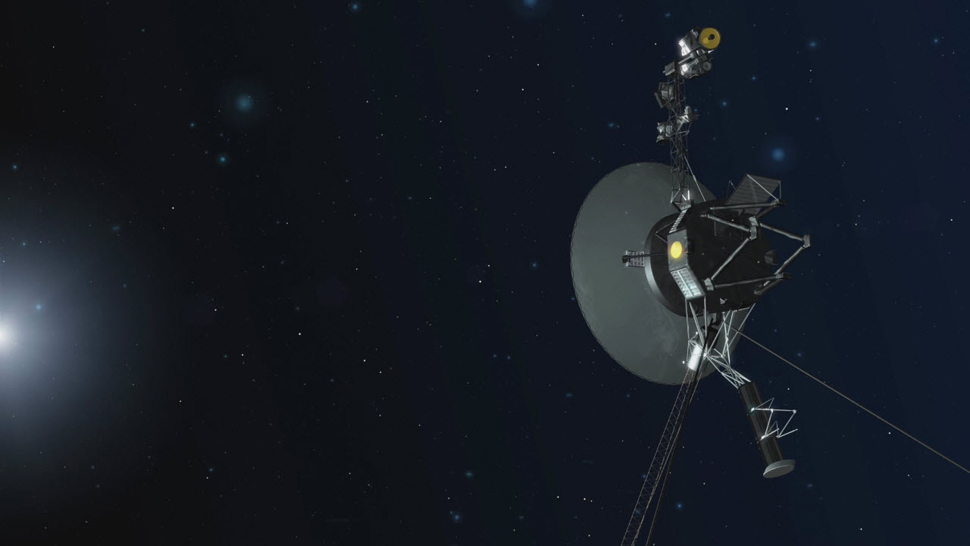
3rd December 2017 Voyager I fires thrusters for first time since 1980 Voyager I, the most distant man-made object, has fired its trajectory thrusters for the first time since November 1980, to extend its lifetime by two or three more years.
The Voyager 1 space probe was launched by NASA on 5th September 1977. Having operated for 40 years, two months and 28 days, the spacecraft still communicates back to Earth to receive commands and return data. At a distance of 141 astronomical units, or 13.1 billion miles (21.1 billion km), it is the farthest human-made object from Earth, with signals at light speed taking 19.5 hours to reach it. The progress of Voyager I and its sister probe – Voyager II – can be seen at the NASA JPL website, updated in real-time. This week, for the first time in 37 years, scientists and engineers on the Voyager team commanded the spacecraft to fire a set of four trajectory thrusters to test their ability to orient it. Four backup TCM thrusters were fired up, using 10-millisecond pulses. The team waited eagerly, as the test results were sent back from deep space, taking 19 hours and 35 minutes to reach an antenna in Goldstone, California, that is part of NASA's Deep Space Network. "The Voyager flight team dug up decades-old data and examined the software that was coded in an outdated assembler language, to make sure we could safely test the thrusters," said Chris Jones, chief engineer at JPL. "We got more excited each time with each milestone in the thruster test," said Todd Barber, JPL propulsion engineer. "The mood was one of relief, joy and incredulity after witnessing these well-rested thrusters pick up the baton, as if no time had passed at all." The plan now is to switch to these backup TCM thrusters in January, to subtly rotate the spacecraft and reorient its antenna. In order to make this change, Voyager will need to turn on one heater per thruster, which requires power – a limited resource for the aging mission. When there is no longer enough power to operate the heaters, the team will switch back to the attitude control thrusters. "With these thrusters that are still functional after 37 years without use, we will be able to extend the life of the Voyager 1 spacecraft by two to three years," said Suzanne Dodd, project manager for Voyager at NASA's Jet Propulsion Laboratory, Pasadena, California. This means it can be expected to continue transmitting back to Earth until 2027 or 2028. Looking ahead to the more distant future, Voyager I is expected to reach the Oort cloud by around the year 2310 AD. The Oort cloud is a theoretical shell of icy debris that is believed to surround our Solar System between 2,000 and 50,000 AU (0.03 and 0.8 ly). It will pass near the red dwarf star, Gliese 445, during the 43rd millennium. Both Voyager I and Voyager II are expected to continue drifting through our Milky Way galaxy for aeons.
Comments »
If you enjoyed this article, please consider sharing it:
|







